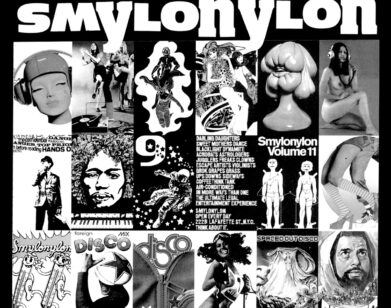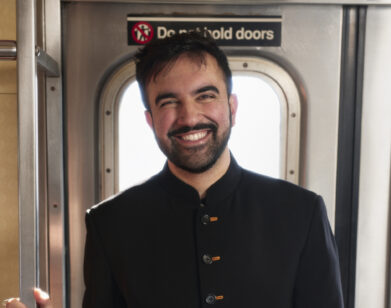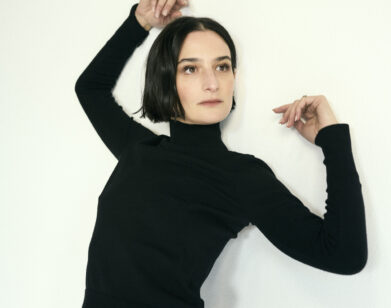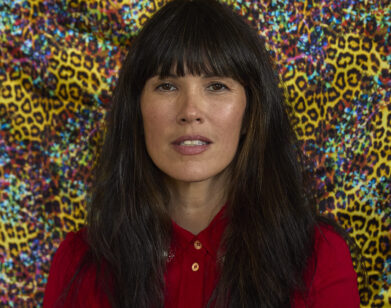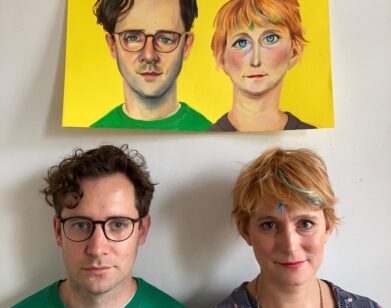Sloane Crosley
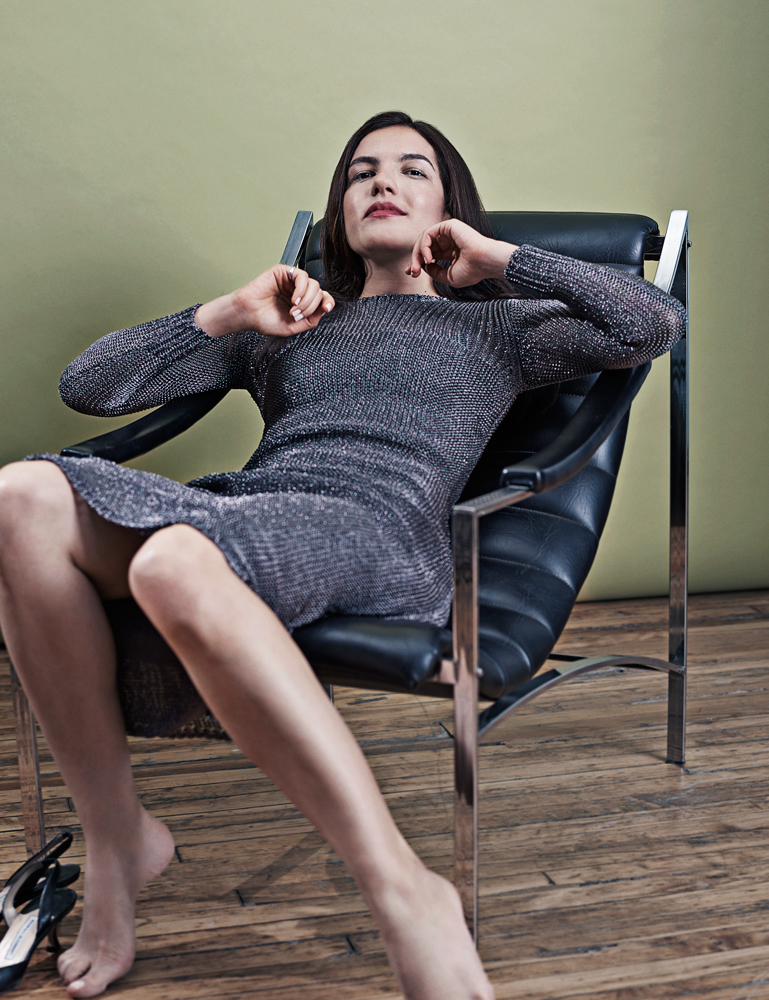
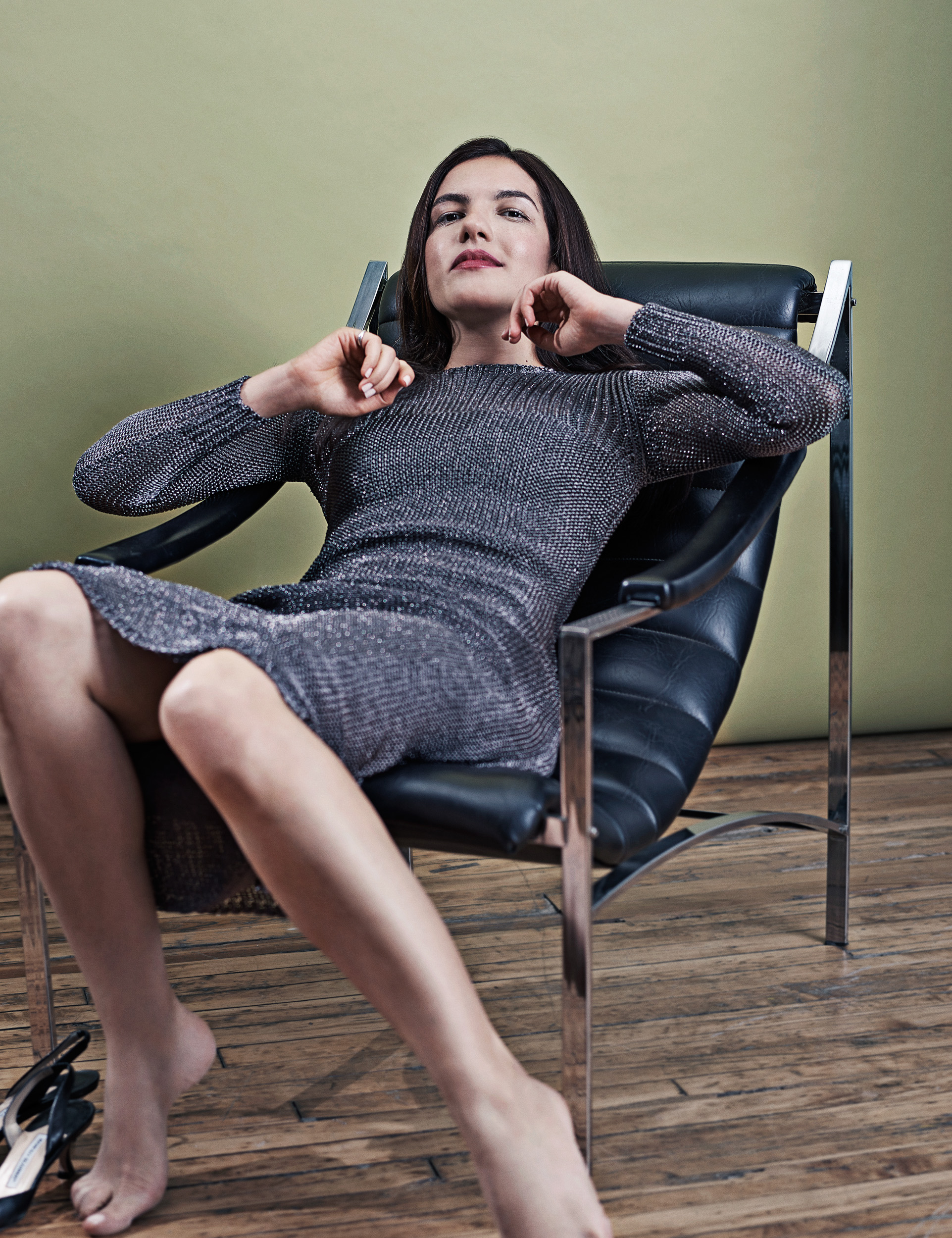
SLOANE CROSLEY IN NEW YORK, JUNE 2015. DRESS: BOSS. SHOES: MANOLO BLAHNIK.COSMETICS: DIOR, INCLUDING DIOR VERNIS IN TRA-LA-LA. STYLING: ANDREW MUKAMAL. HAIR: CHARLIE TAYLOR FOR HAIR STORY/HONEY ARTISTS. MAKEUP: VIOLETTE FOR MAC COSMETICS/MANAGEMENT + ARTISTS. MANICURE: ERI HANDA FOR DIOR VERNIS/MAM. PROP STYLING: KOREY WHITE/11th ST. WORKSHOP. SPECIAL THANKS: SHIO STUDIO.
It’s not every day that a celebrated young humor essayist pushes past the velvet ropes of her comfort zone and delivers a work of fiction that’s as much a thriller as a comedy of manners. But, of course, not every essayist is Sloane Crosley. Her 2008 debut collection, I Was Told There’d Be Cake, which brought a breezy insouciance to topics ranging from plastic ponies to hellish weddings, established her as a formidable voice in literary nonfiction and was a New York Times best seller. Her best-selling follow-up collection, 2010’s How Did You Get This Number, was just as witty, warm, and buoyed by Crosley’s trademark gift for raconteurship that is edgy but never caustic, mysterious but never too coy.
Her debut novel, The Clasp (FSG), is shot through with numerous inimitable Crosley-isms—wisecracking young sophisticates, trenchant yet occasionally perverse social observations, the errant (and unapologetic) pun. At its heart, though, it’s a treasure hunt. Playing off the melodrama and social critique of Guy de Maupassant’s classic 1884 short story “The Necklace,” The Clasp pulls three college friends, now pushing 30 and each struggling with their own versions of existential disenchantment, along a journey of literal and figurative discovery. Kezia is ambitious and restless and wriggling under the thumb of her mercurial jewelry-designer boss. Nathaniel is an aspiring Hollywood writer who’s not as shallow as he seems determined to think he is. Finally, there’s the smart but self-pitying Victor, whose love for Kezia is matched only by Kezia’s love for Nathaniel and whose seemingly irrational quest for a long disappeared necklace eventually leads all three on a caper across the ocean to the French countryside—and, eventually, to better versions of themselves.
MEGHAN DAUM: Let’s start with the concept of integrating the Guy de Maupassant story “The Necklace.” I feel like it’s increasingly common nowadays for writers to reimagine classic novels and stories and set them in a contemporary context. But this isn’t a reimagining as much as … as what would you say, an homage?
SLOANE CROSLEY: I would say it’s sort of a gentle tribute. This is distinct from a reimagining. I mean, Guy de Maupassant, without actually appearing himself, does come into the book. There’s obviously jewelry—a necklace—in the book, too. That stuff is very concrete. But in a more abstract way, I thought I would just give the general motivations and plotline of “The Necklace” to each of the characters instead of making the entire book formatted after that specific short story.
DAUM: Was “The Necklace” a story that you cared about for a long time? Did you, like your characters, read it in college, dismiss it, and come back to it later?
CROSLEY: That’s actually funny. Until now I hadn’t quite realized how crazy it is that the characters study “The Necklace” in college. Because I think I read it—as most people do if they read it at all—in middle school. So I don’t know what kind of community college we’re talking about here. [laughs] But the answer to your question is no. “The Necklace” is not remotely my most favorite short story. I tend to love the contemporary stuff. I love Mona Simpson. I love Lorrie Moore. And then, classically, I lean more in the James Joyce and Chekhov direction. But the way this idea germinated is that I was sitting at home one day and I just started reading “The Necklace.” Because I have it in, like, eight different forms in my house. It’s hiding—kind of appropriately—in three different anthologies and in the Everyman’s Library version. So I started reading it and was blown away by how contemporary it felt. Because it’s really about this woman who wants everything she can’t have, feels like she was destined for more, is on the cusp of achieving it, and then finds out it was all for nothing and fake. I thought, “Well, surely there’s a modern Dangerous Liaisons-esque interpretation of “The Necklace” out there.” But it turns out there really wasn’t.
DAUM: This is your first novel. You’re known as a nonfiction writer, a humorist, and you’ve had great success in that arena. Did you grow up thinking, “Well, the kind of writer I want to be is a humor essayist”? Or did you always think, “I have to write a novel because that’s what one does?”
CROSLEY: No, I wanted to be an archaeologist. But in school you have to take a tremendous amount of statistics for that, and I am not good at statistics. So I hit a real wall with archaeology. It’s probably like wanting to be an architect—you think it’s all fun and games, and then you have to get out a calculator and you’re done.
DAUM: Speaking of college, let’s get back to what kinds of people these characters are. They’re all around 30 now. They went to a particular kind of East Coast liberal arts college. They reminded me a little bit of the characters from The Secret History in that they’re great and interesting and engaging but they’re also sort of loathsome in moments. To that end, I wondered if they were people that you had in your head for a long time? Did you feel in any way like you were tapped into your college orbit and social circle when you were writing them?
CROSLEY: The actual physical description of the college is based, loosely, on Connecticut College, where I went. In terms of the actual people, they are not based on anyone. The idea of Victor came first. I just always liked the idea of somebody who’s the odd man out but doesn’t necessarily get excluded.
DAUM: The one with the chip on his shoulder.
CROSLEY: Yeah, the “chip on the shoulder” guy. Maybe he’s a little bit of everyone’s punching bag, but you’d also miss him if he were gone. He’s also so conscious of his space in the group that he has this almost girlish sensitivity. I feel like I know a couple people like that, but Victor is not based on anyone specifically.
DAUM: That’s part of what I find so interesting about this novel. Each of these characters has their own micro-dramatic version of “The Necklace” going on in their lives. They’re all chasing things that they think are more meaningful than they really are. So Maupassant’s themes lent themselves quite nicely to the story you created. That aside, here is my biggest question: the jewelry thread, the details about the jewelry itself, your knowledge of jewelry and the business and the industry around it. How? What? Why? Where?
CROSLEY: I’m into accessories! The idea of jewelry as art has always fascinated me. My high school in White Plains, New York, had a great art department with jewelry classes—like, how to drill through metal and what different metals will do. I learned what a cabochon is, carats, things like that. So I came to it from an artistic perspective.
DAUM: In The Clasp, Kezia is working in the world of jewelry. The way you show it, it’s full of the same neuroses and narcissism and drama you see in most creative fields, but you also include so many technical details and nuances about the trade. The idea that there would be all these tiny mechanisms within any one piece of jewelry and that these would have to be obtained from different suppliers—that just never occurred to me. How did you procure this knowledge?
CROSLEY: I did a couple things. One is I consulted my friend Lisa Salzer, who runs a company called Lulu Frost. I asked her to read chapters I had written for certain things that you would or wouldn’t say in her business. For instance, you wouldn’t say “accountant,” you would say “manager.” Or you wouldn’t say “purchase order,” you’d say “PO.” And then the other thing I did was just really go for it. I went to the jewelry district. I priced out different pieces of jewelry. I figured out details about casting and molding. I looked through catalogs and catalogs. I went to the New York Public Library. I talked to a couple of friends who worked in jewelry … And just figured it out! For a book that’s not historical, there’s an odd amount of research.
DAUM: At a certain point the characters converge in France. There’s a trip to the French countryside, to the birthplace of Guy de Maupassant. Here again, it seems there’s an incredible amount of detail just about the geography and topography and overall feel of that location. Have you spent a lot of time in France? Or did you go there specifically to do research for this book?
CROSLEY: I went there and then I contacted the château near Dieppe where Guy de Maupassant was born. The family that lives there has a few rooms that they rent out, and they were incredibly confused by my presence there. All the endless questions I had for them that were so beyond what’s on the tour. It’s not a research facility. And the truth is, I was doing a lot of research into Maupassant. In fact, he probably wasn’t born there. His mother—and it goes all back to “The Necklace,” it’s really fascinating—was a bit of a social climber herself, which I think is why a lot of the women in his literature have those same tendencies. There’s a theory that his mother fudged his birth certificate and moved into the château shortly after he was born a couple of miles away in some modest farm house. But on his birth certificate, she wanted it to say that he was born in a fancy château.
DAUM: That struggle is going on with all of your characters in their own unique ways. I’m curious about how much stake you had in the various elements of social and cultural criticism that are at play in the novel. In other words, when these people are 40, will they have gotten over themselves at all?
CROSLEY: The thing with these characters is that they’re learning what they want. And, unfortunately, they’re already acting on certain assumptions about what they want. For two of them, Kezia and Nathaniel, they want certain super-artificial things, but they also want to be in love. They want firm relationships and to feel more connected and conscious in their lives. And the thing is, they want these superficial things, whereas Victor, who’s much more earnest, actually wants something quite real but ends up going after something superficial. So they sort of swap.
DAUM: Speaking of Kezia and Nathaniel, I don’t want to give too much away, but I was really blown over by a scene where Kezia describes the dream she had about him. The dream involves Nathaniel’s future wife. The wife is in the hospital with Nathaniel having a baby, and Kezia is observing on the sidelines and literally disappears by becoming part of the wall. That struck me as so rich and random in the way that real dreams are. Did you just make that up out of whole cloth? It’s so intense.
CROSLEY: I’m so happy because it’s meant to be intense. It’s not based on a real dream as much as the idea that Nathaniel is the kind of guy you love at a certain time in your life. Kezia doesn’t realize it, but at the time she tells him that dream, it’s the beginning of her seeing what she really wants and that it might not be him. But it’s also about the frustration of looking at a guy like Nathaniel, who has all the right parts but is just not focused somehow. It seems so unfair when you date a person like that. You think, “Oh God. You just have to flip a switch on, and you will be a wonderful boyfriend or girlfriend.” At that age, 28, 29, 30, it is a perception you have. I wanted to capture that feeling, that frustration, when you’re simply waiting for that change. So my interpretation of Kezia’s dream has to do with the idea of this really torturous thought that she gives herself. She thinks, “Oh my God, what is he going to be like in ten years, when he is married, and he has all these wonderful qualities, and he’s given them away to someone else?” It’s a really sad moment for her, obviously.
DAUM: How did it feel when you were writing that scene?
CROSLEY: It was really upsetting to watch her be frustrated and him not get it. He’s interrupting her with jokes when she’s trying to retell her dream. Though, you know, other people’s dreams—unless they’re about you or magic unicorns—are, almost as a rule, exceedingly boring. It’s a lot of, “Oh, but then it was my high school but not.” The listener is like, “Please stop.” But in that scene I felt like there was this rhythm where finally there’s a point where he’s silent, and he’s listening, and you feel like he’s actually going to get it. And then he says something like, “Don’t worry—we’re friends.” And it just kills her.
DAUM: That’s a scene where you really get inside Kezia’s head. But I think it’s important to note that the novel is told from several points of view, many of them male. I wondered if you made a conscious decision to make men essentially comprise two thirds of the cast. From there, I wondered if that was an effort to perhaps offset the feminine energy of the whole jewelry milieu. Kind of like putting an NBA player in the movie Trainwreck so men will go see it.
CROSLEY: I think it was mostly because that’s who these characters were. When I started writing the book, I got nervous—like, “Oh gosh, this is not going to be realistic.” And my first set of nerves was, “Do these sound enough like men?” So I would show it to a couple of close male friend writers, with a note that said, “Re: ball scratching—is there enough?” I wondered if the male characters would be thinking more about sex? Or sports? Have I gotten it? But maybe it was also in some ways an exercise to prove that we’re not so different, the sexes.
DAUM: You’re well established as a humorist. At the risk of going down this particular rabbit hole of a conversation, I’m curious as to your thoughts about the, for lack of a better term, politically correct moment that we’re in and the relationship between humor and public sensitivities. Were you aware of censoring yourself or “checking your privilege” at all when you were writing?
CROSLEY: [laughs] Like, “Check your privilege with the coat-check girl at the door.” “Check your privilege” in itself is such a privileged thing to say.
DAUM: But, as a humorist—as a person in the public sphere—how do you feel about this practice of “calling out” writers and others for infractions that may or may not have been intentional. And how do you handle that in fiction? These are, after all, relatively privileged characters who occasionally joke among themselves in a way that might offend people outside of their circle.
CROSLEY: I guess the question is, “Is it worth it?” For instance, no one in the book calls anyone “retarded,” because I don’t think that’s funny. Yes, it happens to be offensive and something I disagree with. But mostly, it’s not funny. There are a lot of offensive things that you might include in the context of a character, in the context of realism. But I don’t think it means that you’re giving a stamp of approval to those offenses. I do think that if you’re faced with a choice—to make this joke or not make it—it should be that you simply have to make the joke. It should be that the joke says something about who that character is or what’s going on in a certain scene. The joke has to be a really useful tool. If it’s not accomplishing one of those things, it’s just not funny. I mean, that’s how I feel about everything. Even in my essays. There are essays that have moments in which I regret being vividly cruel—moments when the joke wasn’t worth it. But mostly it’s not because it hurt someone’s feelings but because it wasn’t funny enough. If it’s funny enough, it doesn’t matter. That’s my theory.
MEGHAN DAUM IS AN AUTHOR, ESSAYIST, AND COLUMNIST FOR THE LOS ANGELES TIMES.

